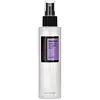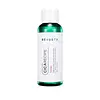What's inside
What's inside
 Key Ingredients
Key Ingredients

 Benefits
Benefits

 Concerns
Concerns

 Ingredients Side-by-side
Ingredients Side-by-side

Water
Skin ConditioningCentella Asiatica Extract
CleansingMethylpropanediol
SolventButylene Glycol
HumectantNiacinamide
SmoothingMadecassoside
AntioxidantMadecassic Acid
Skin ConditioningAsiatic Acid
Skin ConditioningCeramide NP
Skin ConditioningMelia Azadirachta Leaf Extract
Skin ConditioningMelia Azadirachta Flower Extract
Skin ConditioningAsiaticoside
AntioxidantPanthenol
Skin ConditioningLavandula Angustifolia Oil
MaskingCitrus Aurantium Bergamia Fruit Oil
Masking1,2-Hexanediol
Skin ConditioningCaprylyl Glycol
EmollientGlycereth-26
HumectantGlycereth-25 PCA Isostearate
EmulsifyingBetaine
HumectantEthylhexylglycerin
Skin ConditioningAdenosine
Skin ConditioningDisodium EDTA
Xylitylglucoside
HumectantAnhydroxylitol
HumectantAmmonium Acryloyldimethyltaurate/Vp Copolymer
Xylitol
HumectantXanthan Gum
EmulsifyingGlucose
HumectantSodium Hyaluronate
HumectantGlycerin
HumectantCaprylic/Capric Triglyceride
MaskingDextrin
AbsorbentHydrogenated Lecithin
EmulsifyingParfum
MaskingLimonene
PerfumingWater, Centella Asiatica Extract, Methylpropanediol, Butylene Glycol, Niacinamide, Madecassoside, Madecassic Acid, Asiatic Acid, Ceramide NP, Melia Azadirachta Leaf Extract, Melia Azadirachta Flower Extract, Asiaticoside, Panthenol, Lavandula Angustifolia Oil, Citrus Aurantium Bergamia Fruit Oil, 1,2-Hexanediol, Caprylyl Glycol, Glycereth-26, Glycereth-25 PCA Isostearate, Betaine, Ethylhexylglycerin, Adenosine, Disodium EDTA, Xylitylglucoside, Anhydroxylitol, Ammonium Acryloyldimethyltaurate/Vp Copolymer, Xylitol, Xanthan Gum, Glucose, Sodium Hyaluronate, Glycerin, Caprylic/Capric Triglyceride, Dextrin, Hydrogenated Lecithin, Parfum, Limonene
 Reviews
Reviews

Ingredients Explained
These ingredients are found in both products.
Ingredients higher up in an ingredient list are typically present in a larger amount.
1,2-Hexanediol is a synthetic liquid and another multi-functional powerhouse.
It is a:
- Humectant, drawing moisture into the skin
- Emollient, helping to soften skin
- Solvent, dispersing and stabilizing formulas
- Preservative booster, enhancing the antimicrobial activity of other preservatives
Butylene Glycol (or BG) is used within cosmetic products for a few different reasons:
Overall, Butylene Glycol is a safe and well-rounded ingredient that works well with other ingredients.
Though this ingredient works well with most skin types, some people with sensitive skin may experience a reaction such as allergic rashes, closed comedones, or itchiness.
Learn more about Butylene GlycolPanthenol is a common ingredient that helps hydrate and soothe the skin. It is found naturally in our skin and hair.
There are two forms of panthenol: D and L.
D-panthenol is also known as dexpanthenol. Most cosmetics use dexpanthenol or a mixture of D and L-panthenol.
Panthenol is famous due to its ability to go deeper into the skin's layers. Using this ingredient has numerous pros (and no cons):
Like hyaluronic acid, panthenol is a humectant. Humectants are able to bind and hold large amounts of water to keep skin hydrated.
This ingredient works well for wound healing. It works by increasing tissue in the wound and helps close open wounds.
Once oxidized, panthenol converts to pantothenic acid. Panthothenic acid is found in all living cells.
This ingredient is also referred to as pro-vitamin B5.
Learn more about PanthenolWater. It's the most common cosmetic ingredient of all. You'll usually see it at the top of ingredient lists, meaning that it makes up the largest part of the product.
So why is it so popular? Water most often acts as a solvent - this means that it helps dissolve other ingredients into the formulation.
You'll also recognize water as that liquid we all need to stay alive. If you see this, drink a glass of water. Stay hydrated!
Learn more about Water